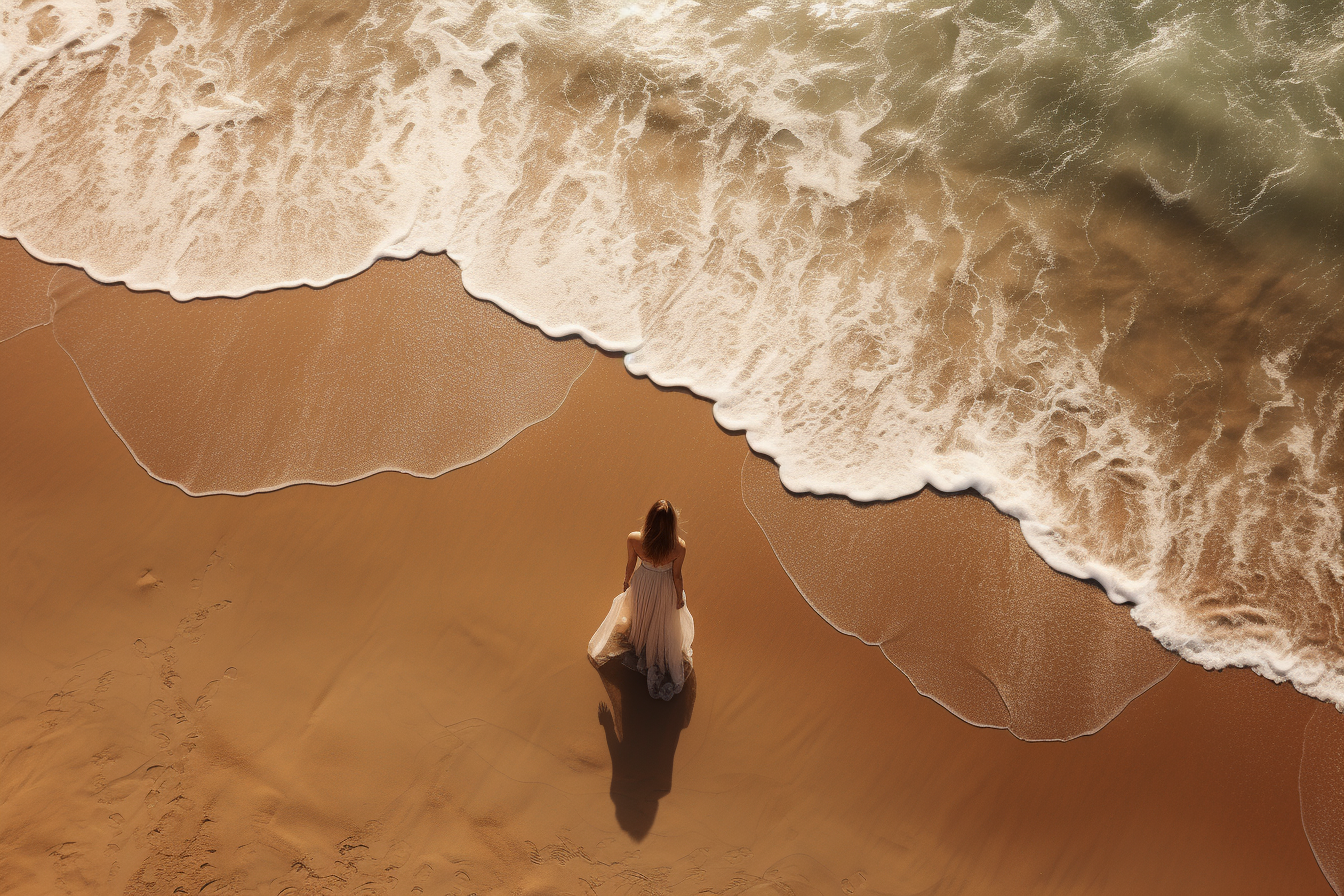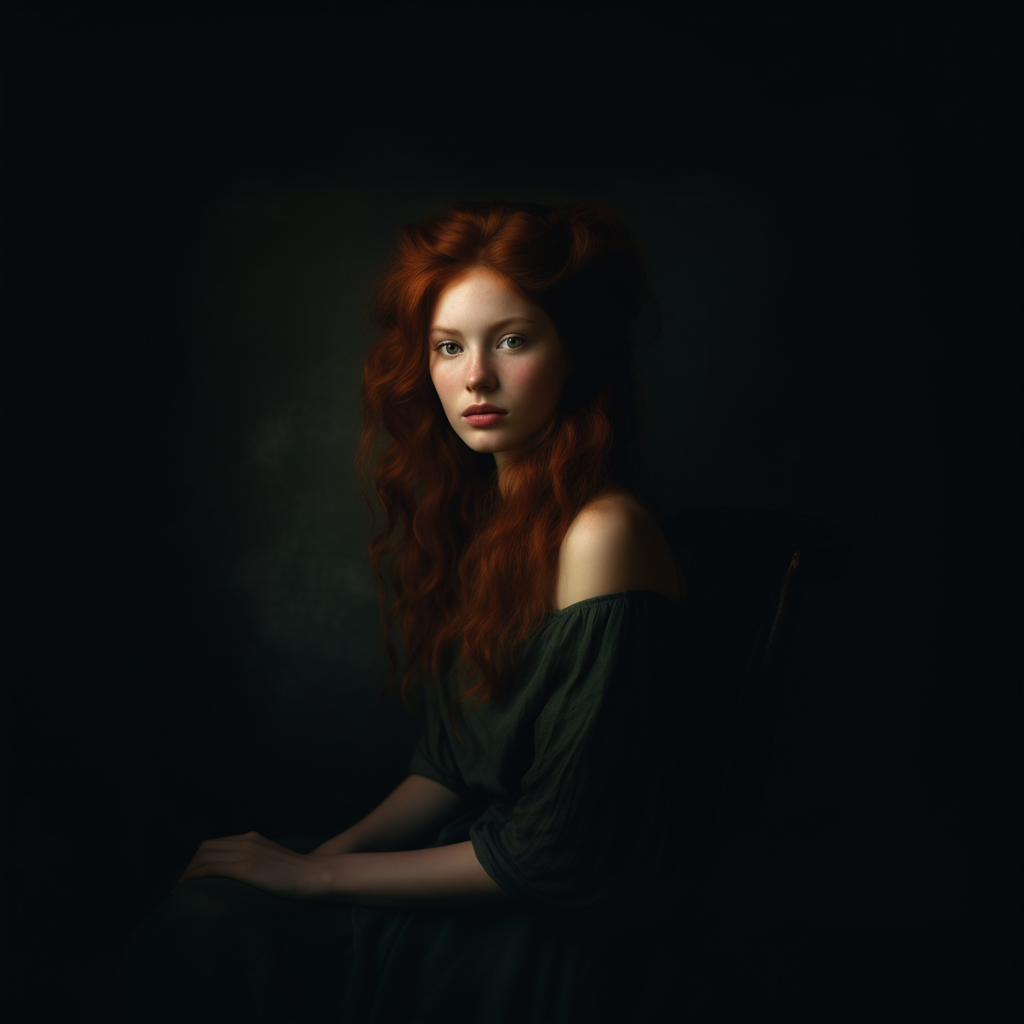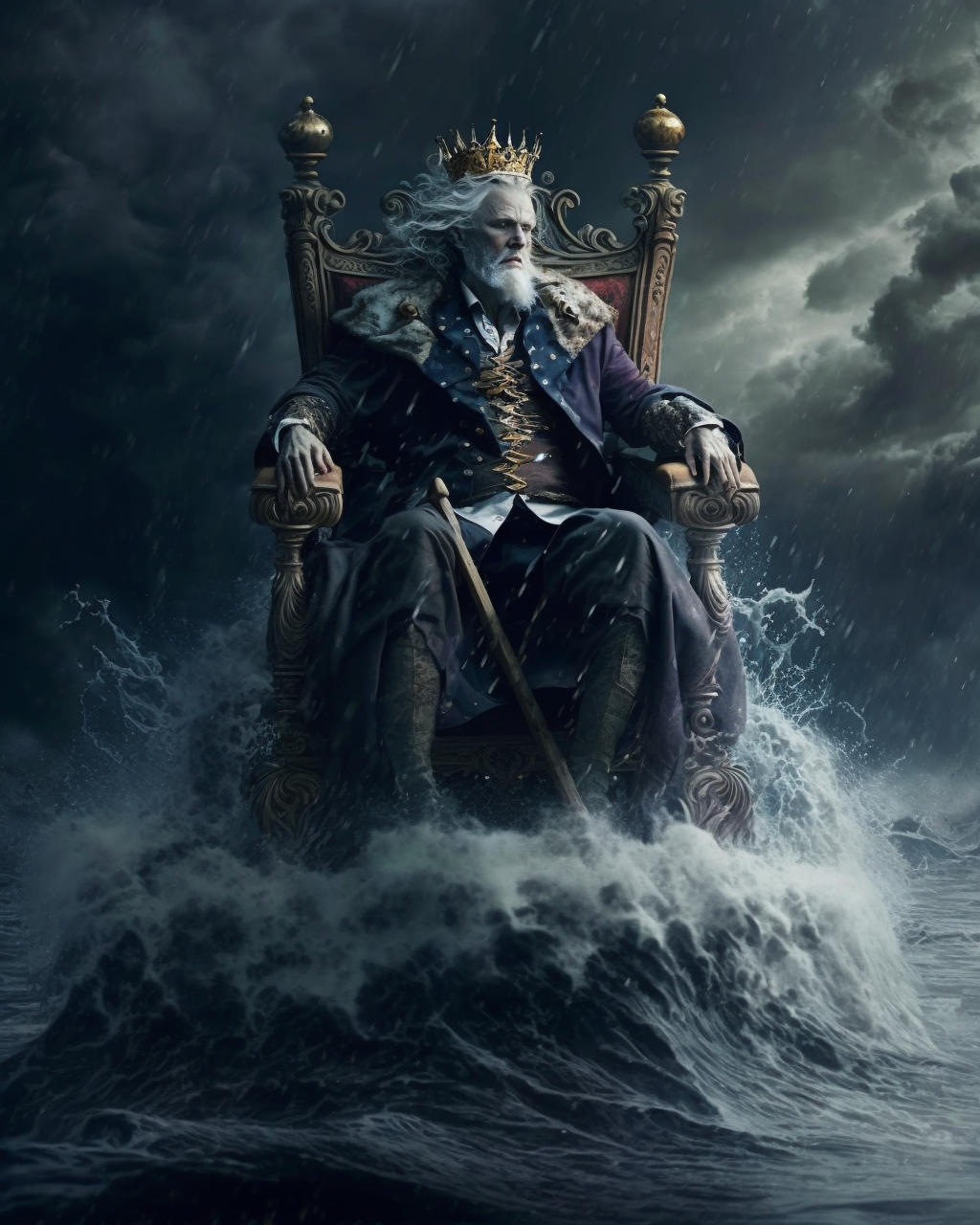I gave an artist talk during my solo exhibition, FATHOM (2023) on how my exhibition was partly inspired by the use of AI image generators. It backfired massively, with many visitors who viewed my works believing they were created by AI. This issue has continued with my more ethereal artworks, and it feels worse than when people say my work is 'photoshopped', by which they really mean: not real. This lack of understanding is affecting artists of all kinds everywhere. However, I was invited to give the talk again for Print Art's Creative Open Mic and so I did more research into the subject and found myself becoming a bit of a champion for the use of AI image generation in photography. Read on to find out why.
Model Emma sits patiently whilst my assistants throw the ocean-printed fabric and I capture the movement in-camera. Unedited GIF created from single photographs.
There is such a buzz around this topic in the photography community, even to the level that we had not 1, but 2 talks AND a panel discussion about it at the recent Sony Kando ANZ event. The general feeling in the audience was of worry, fear of where the technology is going and concern about how quickly it is developing. Will it replace photographs, and will it take our jobs?
AI-generated image of Auckland city skyline at blue hour
The answer, of course, is no. A client can not put a request into an AI image generator, whether they have learned how to use it or not, and get what they expect. The AI will always create something that is imperfect. The skyline above is not accurate and the reflection looks fake. The snorkel below is just a strange tube and the underwater look is wrong. AI can be a fantastic creative tool but the results are unpredictable and unfinished.
AI-generated image of a woman snorkeling?
Let's take an example. Have you ever gone to the beach, taken your shoes off, and looked down at your feet in the sand? Perhaps you took a photo of it. I asked Midjourney, one of the best AI image generator tools, to give me this image using simple text prompts, and this is what I got.
AI-generated images of feet and sand
I don't know about you, but that's not what I expected to see, and I'm a bit distressed by all the excess toes.
Yet, there are some things that AI does extremely well. I use it for bouncing ideas around, for getting a new perspective, or sometimes just to see what a random idea that popped into my head could look like. That's how the images for FATHOM got started. Below is some progression for the creation of the ABYSS dress, created from the text prompt "A dress made out of the ocean".
Far left: AI-generated image in 2022. Centre: AI-generated image in 2023. Right: Photograph of the final dress, sewn and modelled by the wonderful Emma.

AI-generated image 2022

AI-generated image 2023

Photograph featuring the real dress
We start to get more worried when the image is more realistic, like the ones featured below. But, there's always a way to tell. It could be the perspective is wrong, the limbs are too long or too many/not enough digits, there are repetitive or odd objects, or it could be simply that everything looks too perfect. Once you learn to spot this veneer, AI-generated images become easily distinguishable. However, it's only a matter of time until this is improved and we are sadly living in an age where everything we see, particularly online, must be questioned.

AI-generated image of a woman on a beach

AI-generated image of a woman sat for a low key portrait

AI-generated image of a brown cow in moorland

AI-generated image of a cosy lounge space
My favourite use for AI is to create images from my imagination that are not possible for me to photograph with my current means and abilities, like the ones featured below. I find this kind-of fulfilling because at least they aren't in my head any more. Sometimes, the images will show my ideas in a way that doesn't seem so unachievable after all - just like the ABYSS dress. If you are a passionate creative like I am, this is a dangerous process that quickly leads to the next all-consuming art project!

AI-generated image of a sad king on an ocean throne

AI-generated image of horses in ocean waves

AI-generated image of a woman underwater
I have been using Midjourney on and off for over a year, and I am blown away by the progress it has made. I have always found the AI's creations from my text prompts fascinating and intriguing. I have used it to generate stock images for workshop advertising, to bounce ideas, to generate content for my Masters, to create digital collages (see below), to make graphics for presentations, and so much more. I have used Photoshop generative fill endlessly over other healing tools and to fill in expanded image borders. I use it as a tool for my own creativity. I consider it a collaboration. I do not consider the images in any way equal to photographs and I don't consider them to be final products.
Never has creativity been so easily accessible to so many - but we need to be more transparent about it. People don't like to be tricked. An AI-generated image is not a photograph, it is its own kind of art and shouldn't be passed off as anything else, no matter how realistic.
AI and photography: should we be worried? No, we should be inspired.
Progress video showing the build-up of Photoshop layers, using a combination of AI-generated images and original photographs to create the final work
